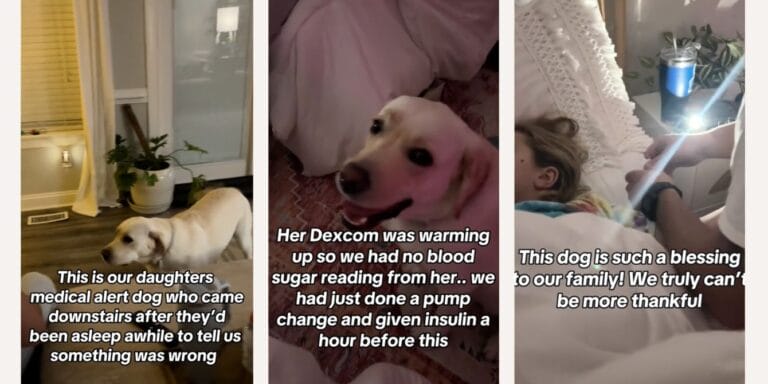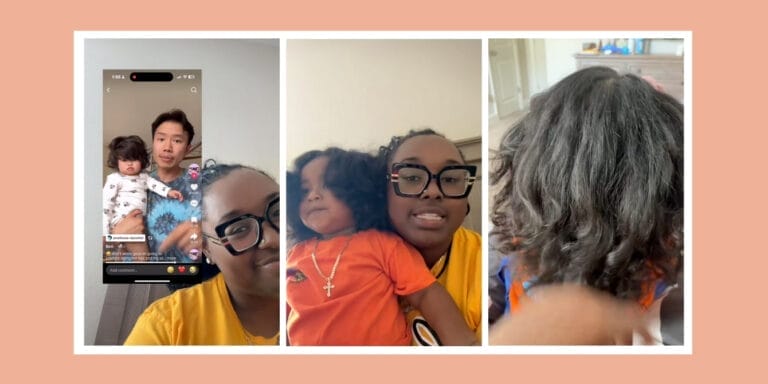Pediatric ER doctor debunks the ‘myth’ of dry drowning—what parents need to know

@beachgem10/TikTok
“Dry drowning is not real. It's a myth that has been propagated by the media since 2017.
Table of Contents
First things first: the term “dry drowning” is not actually a medical term. Now that we’re at the start of pool and beach season, it’s important to understand everything there is to know about drowning risks for children—and “dry” or “secondary” drowning are often labeled as misinformation by medical professionals.
A pediatric emergency medicine physician, Dr. Meghan Martin, has a popular TikTok account that often explains important medical terminology and relays new medical information in a way that parents can understand, completely sans fear-mongering. In a recent viral TikTok video, she outlines the issues with the term “dry drowning” while explaining the real issue at hand: children drowning in bodies of water.
“Dry drowning is not real. It’s a myth that has been propagated by the media since 2017,” she begins. “The story was of a four-year-old boy in Texas who died a week after playing in water that was about knee-high. It has been subsequently documented that he actually died of an unrelated heart condition.”
She says there is no medical diagnosis of “dry drowning” or “secondary drowning.”
“Secondary drowning is a misnomer,” she explains. “It is the primary effect of a submersion injury that are showing their effects usually within four to six hours and this is extremely rare. Most people who have a submersion injury are going to have symptoms immediately. Coughing, gagging, choking, color change, difficulty breathing.”
She also explains that if someone does sustain a significant submersion injury, water will be aspirated from the lungs—resulting in coughing, gasping, shortness of breath, etc. Situations where the initial symptoms are mild—as presented in the misinformation surrounding the anomaly that is “dry drowning”—but then worsen within six to eight hours later are very rare.
“And these situations are not just a child putting their face in the water and coming back up,” she explains. “These are significant events where there is a fairly large amount of water that is inhaled.”
None of this takes away from the fact that drowning itself is very real and very serious. Drowning is the leading cause of death among children 1 to 4 years old, and it can happen very quickly and silently.
What parents need to know about submersion injuries
“Submersion injury” is now the term more commonly used for drowning and near drowning, per the American Academy of Pediactrics. Drowning remains an important cause of accidental death among children and adolescents, ranking second to motor vehicle accidents as the leading cause of accidental death in this age group. There are over 4,000 pediatric deaths each year attributed to submersion injuries.
Dr. Martin warns parents to look for these symptoms if you suspect your child has sustained a submersion injury:
- Fast breathing
- Retraction in the ribs
- Blue lips
- Vomiting
- Confusion or impaired mental state
The instances where children exhibit symptoms hours after being submerged in water are extremely rare—consisting of only 1% to 2% of submersion injuries—and are much less serious than instantaneous drowning.
“Unfortunately a lot of misinformation about the idea of ‘dry drowning’ has been shared on social media, causing confusion,” Joan Thode, MD, of Penn Medicine Lancaster General Health Physicians Roseville Pediatrics, tells Penn Medicine.
“Put plainly, there is no such thing as dry drowning. Water is aspirated only if a child is unconscious or underwater for a significant amount of time,” Thode continues. “Kids who go swimming and play normally without either needing to be pulled from the bottom of a pool or having a major, persistent choking or coughing episode will not be at risk for later death, because water has not been aspirated.”
A note from Motherly
The bottom line? Water play can be safe and fun at the same time. Take care to supervise little ones anywhere there’s water nearby. Stay safe and happy swimming.





































